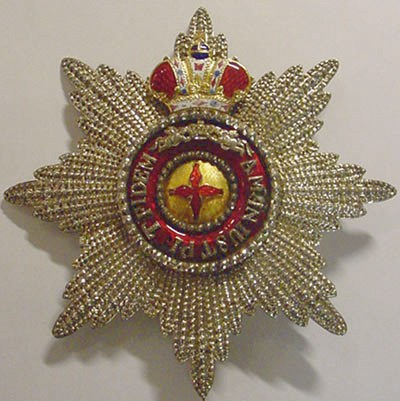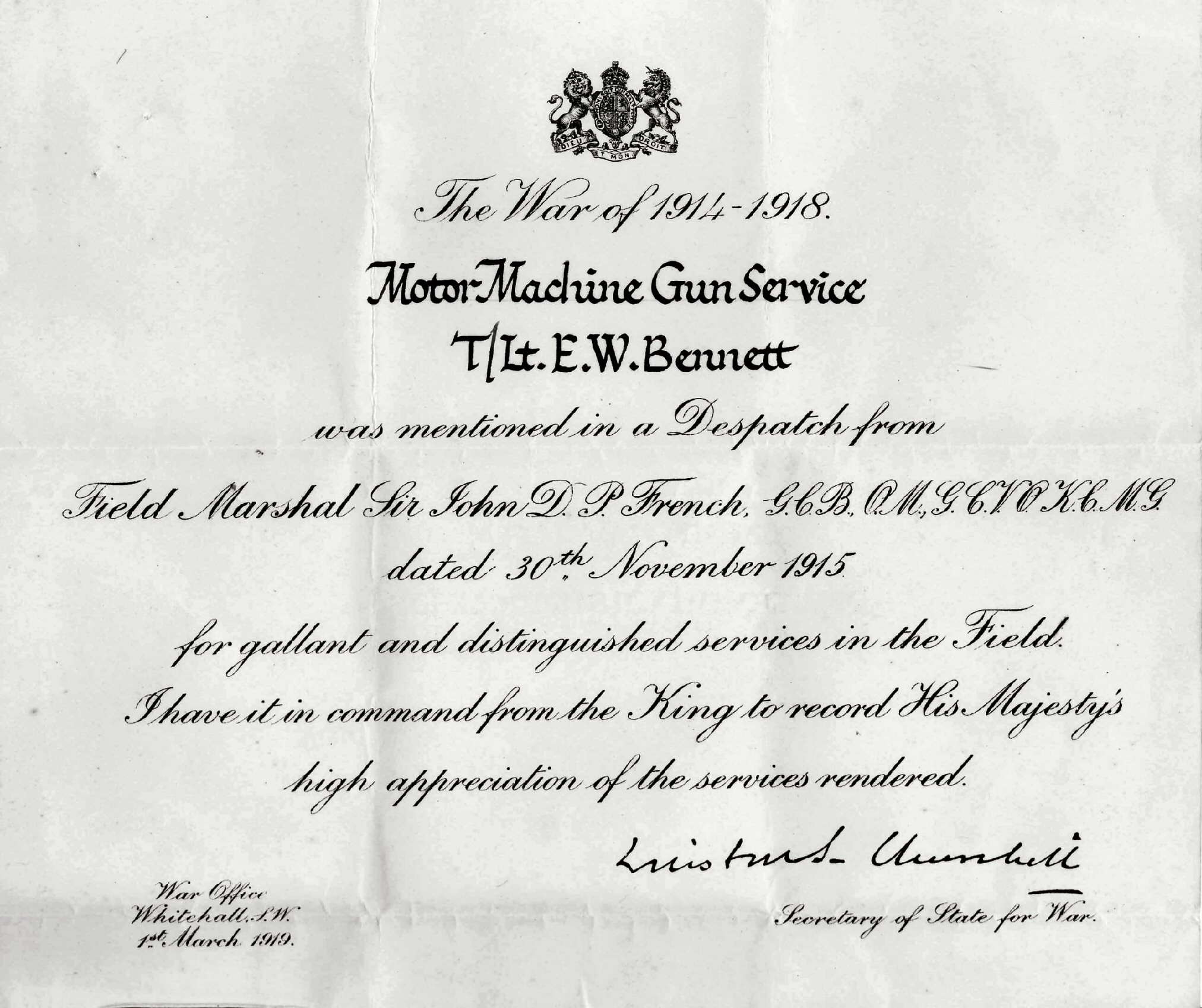|
Eric Robinson V.C.
Rear Admiral Eric Gascoigne Robinson (16 May 1882 – 20 August 1965) was a Royal Navy officer and a recipient of the Victoria Cross. He earned his award by going ashore and single-handedly destroying a Turkish naval gun battery while a lieutenant commander with the fleet stationed off the Dardanelles during the Gallipoli campaign in the First World War. After these exploits, he was wounded on the front line on the Gallipoli Peninsula, but recovered and served continuously for the remainder of the war and into the Russian Civil War. In 1939 aged 57, he again volunteered for military service and spent three more years at sea, commanding convoys during the Battle of the Atlantic. In September 1941 he had to retire on health grounds, but in June 1942 he was well enough to be appointed to the post of Naval Officer in Charge, Dundee. which he held until his final retirement in November 1944. Early life Eric Gascoigne Robinson was born in 1882 at Greenwich in Kent, to John Lovel ... [...More Info...] [...Related Items...] OR: [Wikipedia] [Google] [Baidu] |
Greenwich
Greenwich ( , , ) is an List of areas of London, area in south-east London, England, within the Ceremonial counties of England, ceremonial county of Greater London, east-south-east of Charing Cross. Greenwich is notable for its maritime history and for giving its name to the Prime meridian (Greenwich), Greenwich Meridian (0° longitude) and Greenwich Mean Time. The town became the site of a royal palace, the Palace of Placentia, from the 15th century and was the birthplace of many House of Tudor, Tudors, including Henry VIII of England, Henry VIII and Elizabeth I. The palace fell into disrepair during the English Civil War and was demolished, eventually being replaced by the Greenwich Hospital (London), Royal Naval Hospital for Sailors, designed by Sir Christopher Wren and his assistant Nicholas Hawksmoor. These buildings became the Old Royal Naval College, Royal Naval College in 1873, and they remained a military education establishment until 1998, when they passed into the ... [...More Info...] [...Related Items...] OR: [Wikipedia] [Google] [Baidu] |
Order Of St Anna
The Imperial Order of Saint Anna (; also "Order of Saint Anne" or "Order of Saint Ann") was a Holstein ducal and then Russian imperial order of chivalry. It was established by Karl Friedrich, Duke of Holstein-Gottorp, on 14 February 1735, in honour of his wife Anna Petrovna, daughter of Peter the Great of Russia. Originally, the Order of Saint Anna was a dynastic order of knighthood; but between 1797 and 1917 it had dual status as a dynastic order and as a state order. The Order of St. Anna continued to be awarded after the revolution by Grand Duke Kirill Vladimirovich, Grand Duke Vladimir Kirillovich, and Grand Duchess Maria Vladimirovna. Today, the Russian Imperial Order of St. Anna, awarded by Grand Duchess Maria Vladimirovna is recognized as an order of chivalry by the privately operated ICOC as a continuation of the pre-Revolutionary order, and has been approved for wear with military uniform by the Russian Federation, but not by some members of the Romanov Family Associatio ... [...More Info...] [...Related Items...] OR: [Wikipedia] [Google] [Baidu] |
Mentioned In Despatches
To be mentioned in dispatches (or despatches) describes a member of the armed forces whose name appears in an official report written by a superior officer and sent to the high command, in which their gallant or meritorious action in the face of the enemy is described. In some countries, a service member's name must be mentioned in dispatches as a condition for receiving certain decorations. Being mentioned in dispatches entitles a recipient to wear a small metallic device, but does not include an entitlement to post-nominals. United Kingdom, British Empire and Commonwealth of Nations United Kingdom Servicemen and women of the United Kingdom or the Commonwealth who are mentioned in despatches are not awarded a medal for their actions, but receive a certificate and wear an oak leaf device on the ribbon of the appropriate campaign medal. A smaller version of the oak leaf device is attached to the ribbon when worn alone. Prior to 2014, only one device could be worn on a ribb ... [...More Info...] [...Related Items...] OR: [Wikipedia] [Google] [Baidu] |
Protected Cruiser
Protected cruisers, a type of cruiser of the late 19th century, took their name from the armored deck, which protected vital machine-spaces from fragments released by explosive shells. Protected cruisers notably lacked a belt of armour along the sides, in contrast to armored cruisers which carried both deck and belt armour. Outside of a handful of very large designs in the major navies (which preceded the revival of armored cruisers), the majority of protected cruisers were of 'second-' or 'third-class' types, lighter in displacement and mounting fewer and/or lighter guns than armored cruisers. By the early 20th-century, with the advent of increasingly lighter yet stronger armour, even smaller vessels could afford some level of both belt and deck armour. In the place of protected cruisers, these new ' light armored cruisers' would evolve into light cruisers and heavy cruisers, the former especially taking on many of the roles originally envisioned for protected cruisers. ... [...More Info...] [...Related Items...] OR: [Wikipedia] [Google] [Baidu] |
Battleship
A battleship is a large, heavily naval armour, armored warship with a main battery consisting of large naval gun, guns, designed to serve as a capital ship. From their advent in the late 1880s, battleships were among the largest and most formidable weapon systems ever built, until they were surpassed by aircraft carriers beginning in the 1940s. The modern battleship traces its origin to the sailing ship of the line, which was developed into the steam ship of the line and soon thereafter the ironclad warship. After a period of extensive experimentation in the 1870s and 1880s, ironclad design was largely standardized by the British , which are usually referred to as the first "pre-dreadnought battleships". These ships carried an armament that usually included four large guns and several medium-caliber guns that were to be used against enemy battleships, and numerous small guns for self-defense. Naval powers around the world built dozens of pre-dreadnoughts in the 1890s and early ... [...More Info...] [...Related Items...] OR: [Wikipedia] [Google] [Baidu] |
Britannia Royal Naval College
Britannia Royal Naval College Dartmouth, also known as Dartmouth, is the naval academy of the United Kingdom and the initial officer training establishment of the Royal Navy. It is located on a hill overlooking the port of Dartmouth, Devon, England. Royal Naval officer training has taken place in Dartmouth since 1863. The buildings of the current campus were completed in 1905. Earlier students lived in two wooden hulks moored in the River Dart. Since 1998, BRNC has been the sole centre for Royal Naval officer training. History The training of naval officers at Dartmouth dates from 1863, when the wooden hulk was moved from Portland and moored in the River Dart to serve as a base. In 1864, after an influx of new recruits, ''Britannia'' was supplemented by . Prior to this, a Royal Naval Academy (later Royal Naval College) had operated for more than a century from 1733 to 1837 at Portsmouth, a major naval installation. The original ''Britannia'' was replaced by the in 1869, ... [...More Info...] [...Related Items...] OR: [Wikipedia] [Google] [Baidu] |
St John's School, Leatherhead
St John's School in Leatherhead, Surrey is a fully co-educational private school for pupils aged 11 to 18. The school offers day, weekly and flexible boarding for approximately 800 pupils. St John's was founded in 1851 to educate the sons of the clergy, and was moved from St John's Wood, London to its current site in Surrey in 1872. Set in , the school's site is a mixture of old and new, with mid-Victorian architecture complemented by a Science Centre, and modern classroom blocks and boarding houses. History The school was founded in 1851 as St John's Foundational School for the Sons of Poor Clergy. Its founder was a clergyman, Ashby Haslewood, who was vicar of St Mark's, Hamilton Terrace in St John's Wood, north London. He had a dual purpose in founding the school - to offer free education for the sons of poor clergymen and to provide a choir for his large church. Since the 1970s St John's, while maintaining a substantial boarding community, has taken in an increasing ... [...More Info...] [...Related Items...] OR: [Wikipedia] [Google] [Baidu] |
Royal Naval College, Greenwich
The Royal Naval College, Greenwich, was a Royal Navy training establishment between 1873 and 1998, providing courses for naval officers. It was the home of the Royal Navy's staff college, which provided advanced training for officers. The equivalent in the British Army was the Staff College, Camberley, and the equivalent in the Royal Air Force was the RAF Staff College, Bracknell. History The Royal Naval College, Greenwich, was founded by an Order in Council dated 16 January 1873. The establishment of its officers consisted of a president, who was always a flag officer; a captain, Royal Navy; a director of studies; and professors of mathematics, physical science, chemistry, applied mechanics, and fortification. It was to take in officers who were already sub-lieutenants and to operate as "the university of the Navy". The director of studies, a civilian, was in charge of an academic board, while the captain of the college was a naval officer who acted as chief of staff. The R ... [...More Info...] [...Related Items...] OR: [Wikipedia] [Google] [Baidu] |
Dardanelles
The Dardanelles ( ; ; ), also known as the Strait of Gallipoli (after the Gallipoli peninsula) and in classical antiquity as the Hellespont ( ; ), is a narrow, natural strait and internationally significant waterway in northwestern Turkey that forms part of the continental boundary between Asia and Europe and separates Asian Turkey from European Turkey. Together with the Bosporus, the Dardanelles forms the Turkish Straits. One of the world's narrowest straits used for International waterway, international navigation, the Dardanelles connects the Sea of Marmara with the Aegean Sea, Aegean and Mediterranean Sea, Mediterranean seas while also allowing passage to the Black Sea by extension via the Bosporus. The Dardanelles is long and wide. It has an average depth of with a maximum depth of at its narrowest point abreast the city of Çanakkale. The first fixed crossing across the Dardanelles opened in 2022 with the completion of the 1915 Çanakkale Bridge. Most of the northe ... [...More Info...] [...Related Items...] OR: [Wikipedia] [Google] [Baidu] |
King Haakon VII Freedom Cross
King Haakon VII's Freedom Cross () was established in Norway on 18 May 1945. The medal is awarded to Norwegian or foreign military or civilian personnel for outstanding achievement in wartime. It is ranked fifth in the order of precedence in the Norwegian honours system. Description The medal is in the shape of a Maltese cross. In the middle of the cross on the adverse side is a circular red field with the monogram of King Haakon VII over the letter V for victory in gilded silver. On the reverse side the following is engraved: "Alt for Norge 7 juni 1945" (All for Norway 7 June 1945), the seventh of June being the day the King came back to Norway after his five-year forced exile during World War II World War II or the Second World War (1 September 1939 – 2 September 1945) was a World war, global conflict between two coalitions: the Allies of World War II, Allies and the Axis powers. World War II by country, Nearly all of the wo .... The medal is hung from a blue ... [...More Info...] [...Related Items...] OR: [Wikipedia] [Google] [Baidu] |






